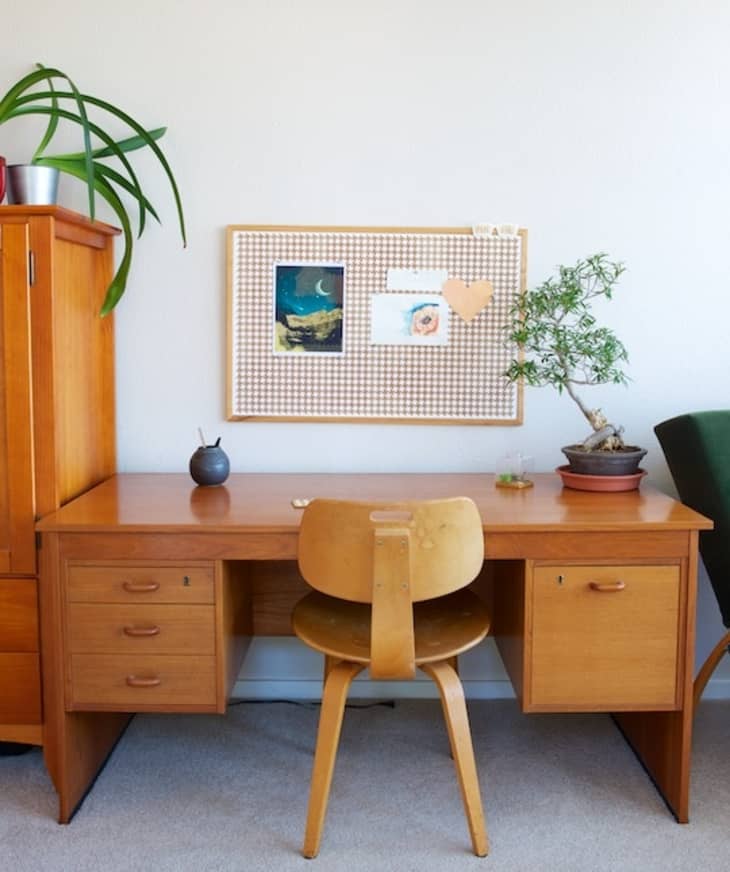How Much Rent Can You Really Afford?

Knowing what you want in a rental apartment is pretty easy: space, location, storage, beautiful floors, light, etc. Finding all of those things within your budget can be a bit more difficult. But before you even start contemplating your rental possibilities, you should probably know what your budget is, and fortunately, this step isn’t all that difficult.
There are multiple ways to figure out how much you can afford to spend on rent, but my preferred method involves three main steps:
1. The Mathematical Approach.
Generally speaking, your rent should be somewhere around 30% of your income. Some people can stretch that figure a bit more, but for most people, 30% is a wise range that will allow you to meet all your other living and entertainment expenses and that will still allow you to save for retirement or to put money aside in case of an emergency.
To figure out how much 30% would be, take your combined annual income and divide it by 40. (This is just a shortcut for taking 30% of your income and then dividing it across 12 months.)
For instance, let’s say you make $72,000 per year.
$72,000 ÷ 40 = $1,800 per month
-or-
30% of $72,000 = $21,600; $21,600 ÷ 12 = $1,800
Easy as pie!
That said, you should take a couple of points into consideration with this figure. For one, you should make this calculation not with your salary, but with your actual take-home pay. If there are hefty taxes or other withholdings taken from your check each month, that means that you have less disposable income than your nominal salary figure might lead you to believe.
Second, remember that this figure needs to cover all housing costs, not just rent. I’ll speak more about these in a moment, but when moving forward with this figure, consider things like utilities, insurance, and other house-related expenses as part of it.
2. Personal comfort.
Just because you can pay a certain amount doesn’t mean that you should. Maybe you’d like to amass more of a nest egg, or perhaps your budget focuses much more heavily on discretionary expenses like entertainment, travel, or restaurant costs. This means that you might want to spend less on your home than this mathematical guideline suggests.
On the flip side, living in some places like San Francisco or New York City often involves paying higher rent, but you may save money on transportation costs or other general living expenses, meaning that you feel more comfortable spending a higher proportion of your overall budget on rent than you might elsewhere.
If you have kids, you should also consider how much their associated expenses will affect your budget. If you’re paying for private school or daycare, this will probably change how much you can devote to rental costs.
Ultimately, you should use the mathematical guideline above to get a rough idea, but you should use your personal comfort to develop realistic budgetary goals. Try to discern how much you’re willing to devote to necessary expenses, social spending, general living expenses, and savings, and from there, figure out what you’d be comfortable paying.
3. Think through the Specifics.
As you start searching for places, consider what additional expenses will go into housing, and take these into account when you calculate. Paying utilities can add a fairly large amount to your monthly payment, even if the nominal fee you pay in rent is affordable. When you think about the cost of a particular apartment, try to consider whether you or your landlord pays utilities, whether you’ll be paying for renters’ insurance, and what other necessary bills will form part of your expenses (TV, internet, etc.). If you’ll be living with roommates, also consider what expectations they’ll be bringing to the table, both in terms of living and in terms of finances.
If this is your first time living on your own, and if you don’t have savings to spend on home goods, you may also want to choose a place with a slightly lower rent at first so you can devote some money to furnishings. Even the most thrifty people will need to buy lots of things that they probably haven’t considered before, like a broom, a toilet brush, and a waste basket, all of which add up on top of larger expenses like furniture. If you don’t factor all of these costs into your rent, you might feel yourself to be a bit in over your head at first, or you might find yourself living a highly minimal existence for a while.
4. Be realistic.
Though 30% of your income might be the standard financial advice, some say that rule has become outdated in the past decade. Rents are rising in major cities, wages are remaining stagnant and younger renters are often saddled with student loan debt. So if it seems like you can’t afford anything in your city with only 30% earmarked towards rent, it’s ok to spend more. To be honest, most people probably are, too, and it’s fine for a bit—as long as you’re keeping tabs on your cash flow. Make sure you take a look at how your rent affects your ability to cover other expenses as well as save for your financial goals, says Douglas Boneparth, president of Bone Fide Wealth, a financial advisor firm geared towards millennials. Just graduated and making a paltry salary? It’s ok to spend more of your income on rent at the expense of your 401K for a little while — just don’t do it forever! And, of course, there’s nothing wrong with living in a smaller, less-expensive space for a couple of years to save up for a down payment on that dream home.
Re-edited from a post originally published 3.20.13 – LS